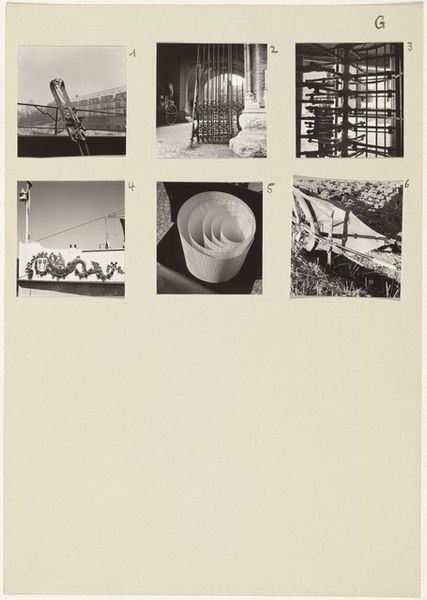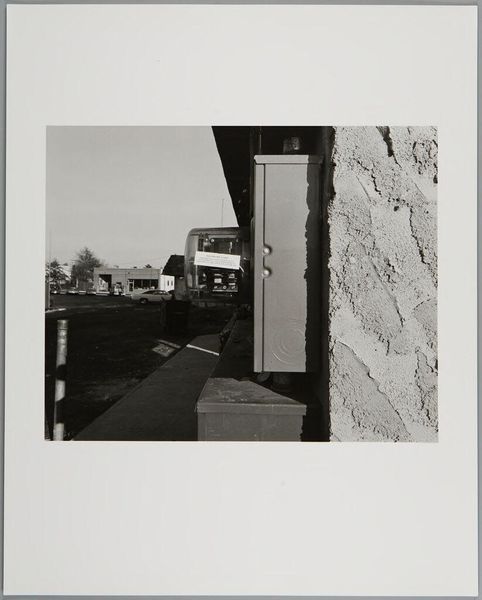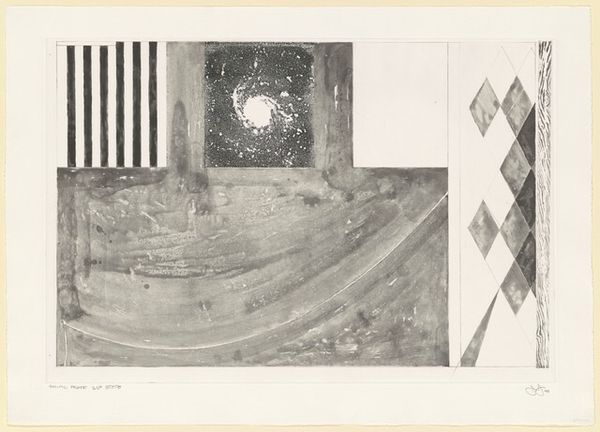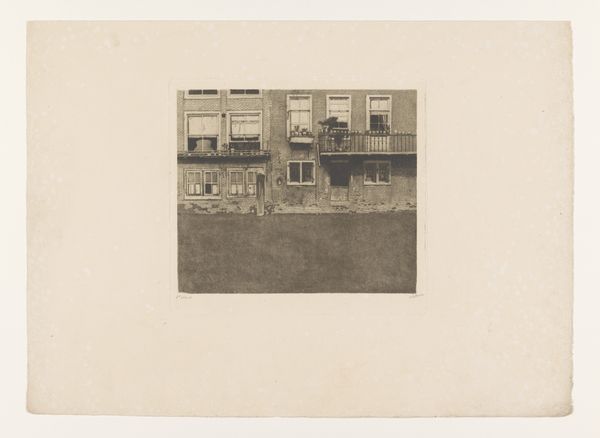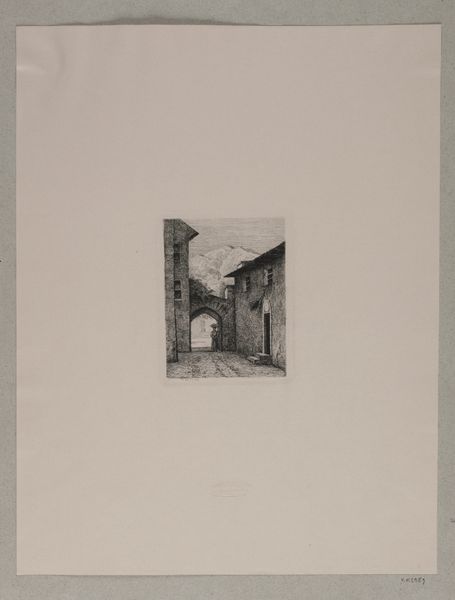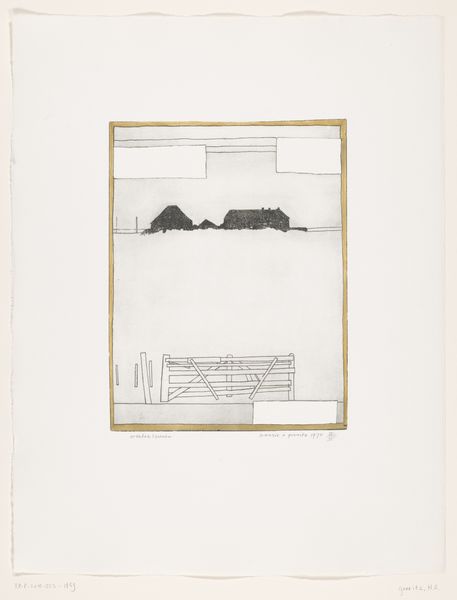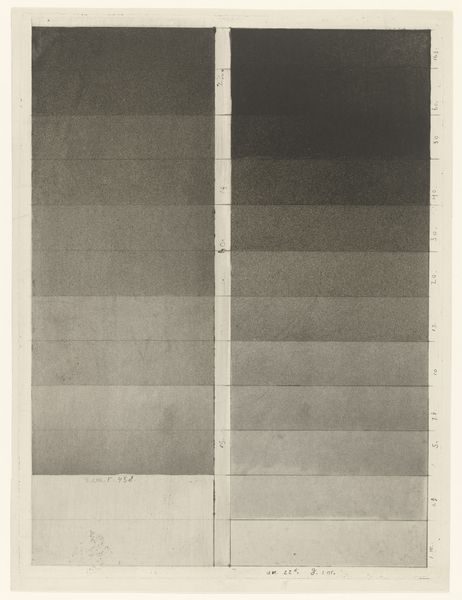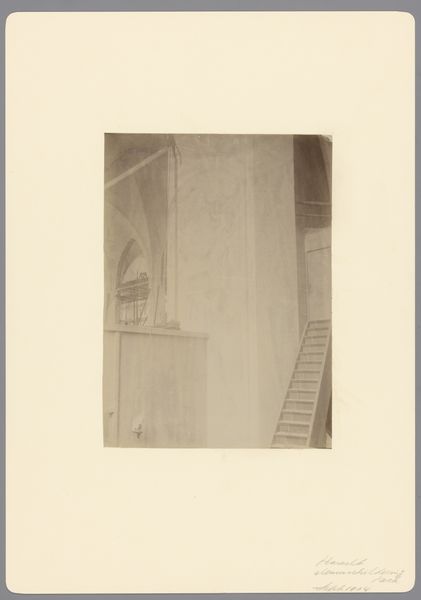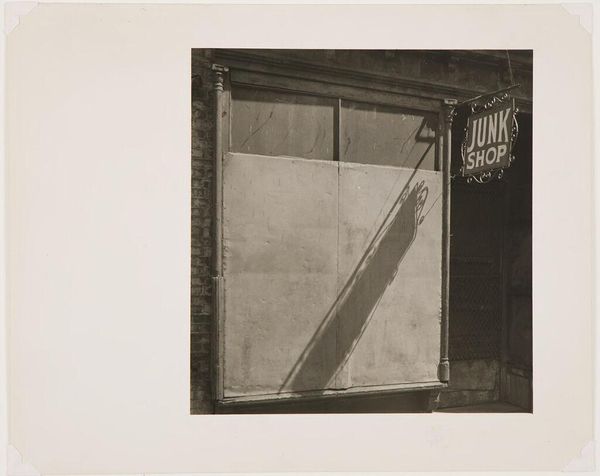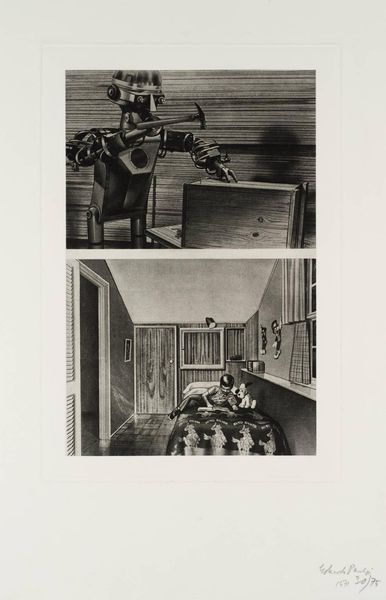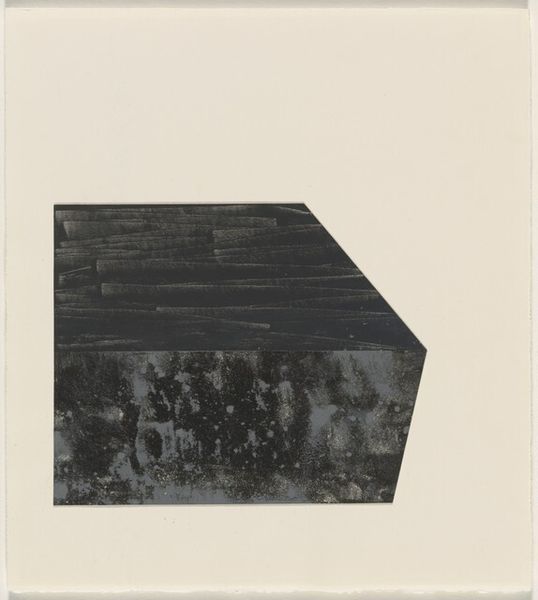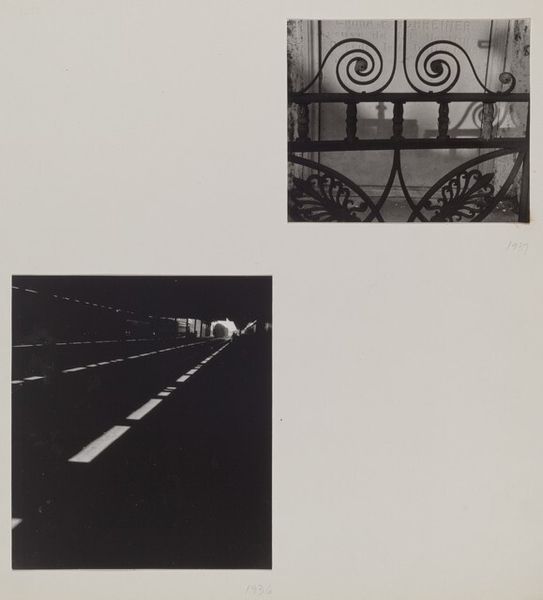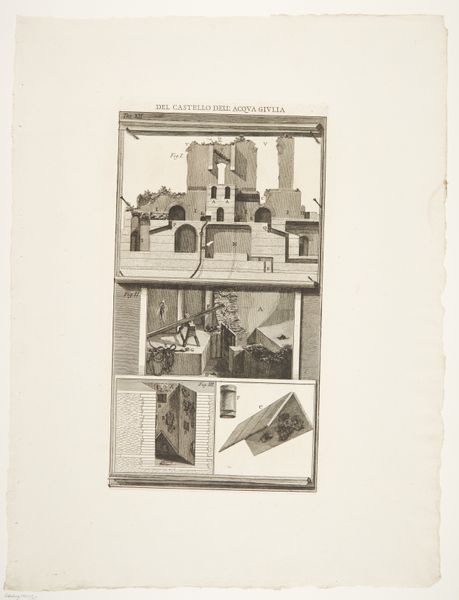
photography, gelatin-silver-print
#
photography
#
gelatin-silver-print
#
line
#
cityscape
#
graphite
#
modernism
#
realism
Dimensions: image (top): 8.7 × 12.7 cm (3 7/16 × 5 in.) image (bottom): 17.5 × 11.9 cm (6 7/8 × 4 11/16 in.) mount: 31.8 × 30.6 cm (12 1/2 × 12 1/16 in.)
Copyright: National Gallery of Art: CC0 1.0
Curator: Here we have Nathan Lerner's gelatin-silver print, "Maquette, page 9," likely created between 1935 and 1944. Two images, seemingly unrelated, sit side-by-side on a larger photographic print. What is your first take on this? Editor: Stark, almost melancholic. The composition, this stark contrast of two small scenes on an otherwise large sheet, creates a feeling of isolation. And black and white... instantly makes me think about history, and lost worlds. Curator: Yes, history is definitely evoked here. On the left, a somewhat nondescript clapboard house and extension, and on the right, laundry hanging between buildings. I think Lerner is exploring everyday experiences through his keen understanding of light and texture using gelatin-silver which offers beautiful tonal gradations. We must also remember that Lerner made a living through commercial photography, including industrial design for Sears-Roebuck; so, attention to craft, the actual material, may have driven him to bring that to the artworld as well. Editor: Hanging laundry… that's practically a symbol of the working class. And a signifier of 'domesticity', perhaps a beacon of order, hanging amongst chaos. In tandem with this is a view of the back of the house—almost like peeking behind the scenes. Does the stark contrast speak to duality and private lives? The interplay makes me wonder about hidden narratives, almost a filmic sense of unfolding a story from fragmented clues. Curator: Fascinating idea! This contrast could reference how we manufacture meanings from the material conditions and also personal desires. By juxtaposing architectural structure and items that soften it, it may even call our attention to how these materials have changed hands, moved through economic circles. Did those objects start somewhere else only to end here, becoming objects to use, care, then throw? How might they shape identities tied to consumption, labor and the idea of "home?" Editor: That's true! What do we keep from the original intentions once objects or even buildings begin their 'lives', their new narratives after arriving. To what extent does the photographer intend to ask those questions versus using symbolic associations of light, shape and scale? What memory-work does his project ignite? Curator: These are key questions about this photograpgh! To consider Lerner’s process gives rise to considering the power of how we reassemble narratives within a frame – photographic or ideological – and how this relates to the world as a larger workshop of material significance and possibilities. Editor: Yes, and how poignant these modest icons of shelter and care are to contemplate now, inviting us to delve into both the familiar and the overlooked meanings around us.
Comments
No comments
Be the first to comment and join the conversation on the ultimate creative platform.

